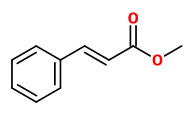Ocotea quixos (Lam.) Kosterm. - syn. Laurus quixos Lam.; Nectandra cinnamomoides (Kunth) Nees - Lauraceae
canela americana (span.), ispinku (quetchua), American cinnamon, Amerikanischer Zimt, Ecuador Zimt
Evergreen tree, native to Ecuador and Colombia. http://www.tropicos.org/Name/17805788?tab=distribution
„The bark is used to produce 'Ecuadorian' (or 'American') cinnamon which bears some resemblance to common cinnamon (which also comes from a tree in this family). The tree is known in Quechua languages as ispinku, which specifically refers to the flowers, and more recently as Flor de Canela… modern Ecuadorians still use this spice during general cooking and the production of food for rituals.“ http://en.wikipedia.org/wiki/Ocotea_quixos
„Among the three South American Lauraceae with cinnamon odours, Ocotea quixos Lam. is distinguished with the richest historical legacy. Cinnamaldehyde, its odoriferous principle, occurs besides o-methoxycinnamaldehyde, cinnamic acid and methyl cinnamate in the fruit calyx.“
[Ocotea quixos, American cinnamon., Naranjo, P., Kijjoa, A., Giesbrecht, A.M., Gottlieb, O.R., Journal of ethnopharmacology, 4(2), 1981, 233-236]
„The flower calices of O. quixos, after having undergone steam distillation, yielded a pale brown oil with a
warm, rather sweet, spicy, cinnamon-like odour in a yield of 1.9%… The oil was rich in oxygenated monoterpenes (48.8%) with a high content of aldehydes (32.2%). The concentration of sesquiterpenes was low (13.7%), with important amounts of β-selinene (2.06%), β-caryophyllene (1.85%), α-humulene (1.79%) and copaene(1.26%). The most abundant chemicals, mainly responsible for the cinnamon-like taste of the spice, were trans-cinnamaldehyde and methyl cinnamate, which accounted for 27.9% and 21.7% respectively.“
[Chemical composition and biological activities of Ishpingo essential oil, a traditional Ecuadorian spice from Ocotea quixos (Lam.) Kosterm. (Lauraceae) flower calices. Renato Bruni, Alessandro Medici, Elisa Andreotti, Carlo Fantin, Mariavittoria Muzzoli, Marco Dehesa, Carlo Romagnoli, Gianni Sacchetti, Food Chemistry, Vol. 85 (3) 2004, 415-421]
„Ocotea oil and trans-cinnamaldehyde competitively antagonized contractions induced by thromboxane A2 receptor agonist U46619 in rat isolated aortic ring … In vivo Ocotea oil, orally administered in a subacute treatment … to mice, prevented acute thrombosis induced by collagen-epinephrine intravenous injection. … Present findings indicate that Ocotea essential oil possesses potent and safe antithrombotic activity attributable to its antiplatelet and vasorelaxant effects. The main constituent trans-cinnamaldehyde seems to be the primary responsible for this activity through a putative mechanism involving the inhibition of thromboxane A2 receptors.“
[Antiplatelet and antithrombotic activities of essential oil from wild Ocotea quixos (Lam.) Kosterm. (Lauraceae) calices from Amazonian Ecuador, Vigilio Ballabeni, Massimiliano Tognolini, Simona Bertoni, Renato Bruni, Alessandra Guerrini, Gabriela Moreno Rueda, Elisabetta Barocelli, Pharmacological Research, Vol. 55 (1) 2007, 23–30]
„…we investigated the anti-inflammatory properties of Ocotea quixos essential oil and of its main components, trans-cinnamaldehyde and methyl cinnamate, in in vitro and in vivo models. Ocotea essential oil and trans-cinnamaldehyde but not methyl cinnamate significantly reduced LPS-induced NO release from J774 macrophages at non-toxic concentrations, inhibited LPS-induced COX-2 expression and increased forskolin-induced cAMP production. The essential oil (30–100 mg/kg os) and trans-cinnamaldehyde (10 mg/kg os) in carrageenan-induced rat paw edema showed anti-inflammatory effect without damaging gastric mucosa. In conclusion we provide the first evidence of a significant anti-inflammatory gastro-sparing activity of O.quixos essential oil.“
[Ocotea quixos Lam. essential oil: In vitro and in vivo investigation on its anti-inflammatory properties. Vigilio Ballabeni, Massimiliano Tognolini, Carmine Giorgio, Simona Bertoni, Renato Bruni, Elisabetta Barocelli, Fitoterapia, Vol. 81 (4) 2010, 289–295]


